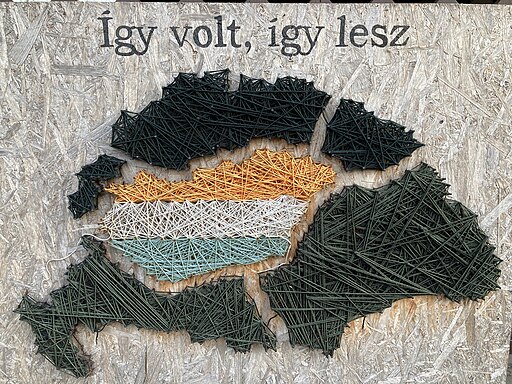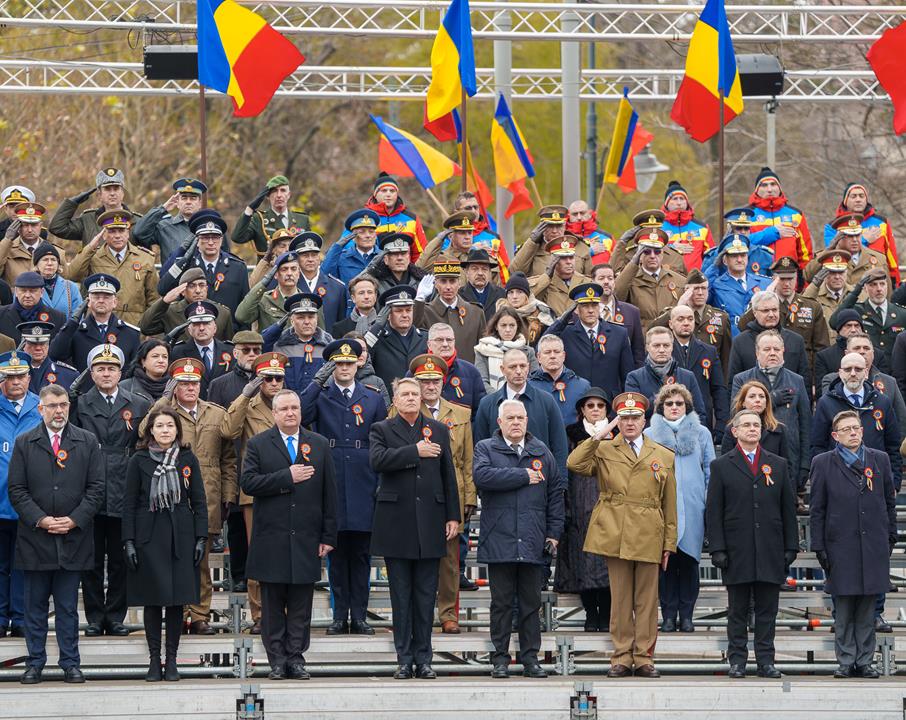Why do many Hungarians mourn on 1 December? And why are Romanians happy because of that?

1 December is regarded by many Hungarians as a day of commemoration and mourning because of Transylvania. Transylvania was a region of the Kingdom of Hungary for hundreds of years, but now it is the Western region of modern-day Romania. More than 1 million Hungarians live there, one of the biggest indigenous national minorities in Europe.
France wanted to weaken the Kingdom of Hungary after WWI
WWI broke out because of the assassination of Crown Prince Franz Ferdinand in 1914, at least that was the pretext of the war. In fact, the war broke out because Germany wanted a redistribution of territories and colonies. Moreover, Berlin felt threatened by the forming Russia-France-Great Britain alliance in the heart of Europe.
Berlin and its allies, the Central Powers, were defeated by October-November 1918. Despite the idea of a long-lasting peace presented by US President Wilson, France wanted a resolution that cemented Germany’s weakness and France’s strength in Central Europe. Therefore, Paris wanted to create strong states around Germany, so they gave lands, wealth and support to Poland, Romania, Czechoslovakia and the state of Slovenes, Croats and Serbs (Yugoslavia).
As a result, the Kingdom of Hungary underwent a brutal mutilation. The Trianon Peace Treaty took 2/3rd of its territory and 1/3rd of the Hungarian population. The greatest slice was Transylvania (103,000 km², bigger than the “new” Hungary – 93,000 km²).

Peace-seeking government
The path leading to that catastrophe was marked by milestones like the Károlyi government’s peace-seeking policies from November 1918. Károlyi, having good French relationships, thought he could convince the victorious powers that “the new Hungary” was a modern, democratic state with no ambition to side again with Germany. Since Hungarian soldiers wanted to go home, he demobilised the army and would have liked to offer autonomy to the nationalities living in the Kingdom of Hungary, including the Romanian community living in Transylvania.
He did not realise that the nationalities wanted more. The nationalities demanded a secession to join Romania or found Czechoslovakia and Yugoslavia. Because of that error, the Hungarian State Railways provided trains for Romanians to help them get to Gyulafehérvár (Alba Iulia) in Central Transylvania for a national gathering on 1 December 1918. There they proclaimed their demand to secede from Hungary and join Romania. In addition, the representatives of the Romanian communities granted autonomy to the Hungarians and Germans living in Transylvania.

Transylvania’s fate was decided in Paris instead of Gyulafehérvár, of course. Nobody cared about the resolutions of a similar Hungarian gathering in Kolozsvár (Cluj Napoca) a few weeks later, where the Hungarian communities proclaimed they would like to remain in Hungary.
1 December, the national day of Romania
However, 1 December is still the National Day of Romania. Romanians believe 1 December marks the day when their ancestors decided about their fate and created Greater Romania (the Republic of Moldova also joined Romania then, but now is an independent state).

In Hungary, many think about this day as the day when we lost Transylvania. Of course, that is a simplification. In 1940, thanks to the 2nd Vienna Award, the Kingdom of Hungary got back Northern Transylvania with Szeklerland. Until October 1944, it was part of Hungary again. Budapest lost it because Stalin decided to strengthen Romania instead of Hungary, and Moscow took Moldova from Bucharest to incorporate it into the Soviet Union.
The Romanian community in Moldova and the Hungarian community in Transylvania survived, although the number of the latter is decreasing quickly and gradually. The 1992 census found more than 1.6 million Hungarians in Romania. Now, their number is 500,000 less, approximately 1.1 million.
Read also:
- Astonishing Transylvanian trail among the best places to visit in the world! – VIDEO and more in THIS article
- Hundreds of thousands of Hungarians celebrated Pentecost in Csíksomlyó in 2024 – PHOTOS and more HERE
Source:






How many years has Hungary controlled Tansilvania?
Transilvania united with Valahia and Modova in 1600 to create Romania back then – to fight with the Ottomans. Hungarians were not even in Europe at the time!
Hungary tool Transilvania from Romania, in 1918 Romania just took Transilvania back, because Transilvania has been populated by Romanians for thousands of years!
Get your facts right and tell the full story!
@George Bacanu
You might want to pop open a history book that wasn’t written by the Romanian Propaganda Ministry, then you will have your facts right.
This story is hilarious though so thanks for that